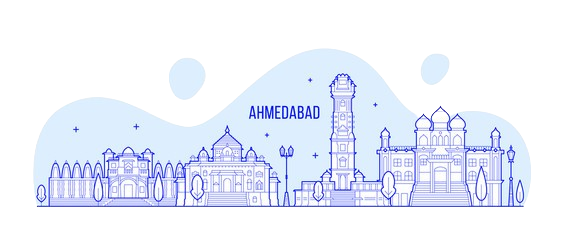

Sabarmati Riverfront is a waterfront being developed along the banks of Sabarmati river in Ahmedabad, India. Proposed in the 1960s, the construction began in 2005. Since 2012, under Phase 1, the waterfront has been gradually opened to public as facilities are constructed; various facilities are under construction. The major objectives of project are environment improvement, social infrastructure and sustainable development. Phase 2 was approved in 2020.
The Sabarmati river is a monsoon-fed river which has a total catchment area of 21,674 square kilometres (8,368 sq mi). The Dharoi Dam constructed in 1976 upstream of Ahmedabad controls water and protects from flooding while Vasna Barrage constructed in 1976 downstream retains water in the river along the city banks and diverts it through Fatehwadi canal for irrigation. The Narmada Canal, which crosses Sabarmati a few kilometres upstream from the city, is part of a larger canal network of Sardar Sarovar Dam. The canal can feed excess water to the river and maintains the level of water in the river which is retained through Vasna Barrage.
Kankaria Lake is the second largest lake in Ahmedabad in the Indian state of Gujarat. It is located in the south-eastern part of the city, in the Maninagar area. It was completed in 1451 during the reign of Sultan Qutb-ud-Din Ahmad Shah II though its origin is placed in the Chaulukya period sometimes. A lakefront is developed around it, which has many public attractions such as a zoo, toy train, kids city, tethered balloon ride, water rides, water park, food stalls, and entertainment facilities. The lakefront was revamped in 2007–2008. Kankaria Carnival is a week-long festival held here in the last week of December. Many cultural, art, and social activities are organised during the carnival
his iconic Atal bridge is first of its kind in the country. It will connect west and east part of Sabarmati Riverfront. It has drawn inspiration from the Kites and the celebration of Uttrayan. Even the colours chosen reflects the hues of kites. To feel the joy of walking above the river, this glass Atal bridge is constructed between Sardar Bridge and Ellis Bridge. The bridge is solely for the walking purpose and also having seating arrangements for the people to enjoy the beauty of the river from the bridge. Plantation of various trees are also done to have some green cover on the bridge..
Located near the Banks of Sabarmati river, Narendra Modi Stadium is the Largest Cricket Stadium in the world. The stadium was constructed in 1982 to flourish cricket talents in the province. Earlier, the stadium had a seating capacity of housing 49,000 cricket fans.
In October 2015, Gujarat Cricket Association under the visionary leadership of the then GCA President and current Prime Minister Shri Narendra Modi decided to reconstruct the stadium and make it the largest Cricket Stadium in the world. In February 2020, the redevelopment task was completed and it is now capable of accommodating more than 1.3 lakh cricket fans. The new Narendra Modi Stadium broke the record by surpassing Melbourne Cricket Ground which has the capacity to accommodate 90,000 spectators.
Wilpaththu, Wasgamuwa, Udawalewe are some other national parks offer you the best view of wildlife. The dry season from May to October is the best time to go on a safari.
Located off the Sarkhej Gandhinagar Highway, Science City is an ambitious initiative of the government of Gujarat to trigger an inquiry of science in the mind of a common citizen with the aid of entertainment and experiential knowledge. Covering an area of more than 107 hectares, the idea is to create imaginative exhibits, virtual reality activity corners, and live demonstrations in an easily understandable manner. Gujarat Science City is a bold initiative of the Government of Gujarat to realize this priority. The Government is creating a sprawling center at Ahmedabad which aims to provide a perfect blend of education and entertainment. It will showcase contemporary and imaginative exhibits, minds on experiences, working models, virtual reality, activity corners, labs and live demonstrations to provide an understanding of science and technology to the common man
One of the biggest personal collections of vintage cars, bikes, buggies and utility vehicles, Auto World is a delight for those who love wheels. Amongst the 300 plus menu of mechanical extravaganza, some noted ones stand out; the car that was used in the movie Gandhi and the first May Bach ever made. Visitors can also find rare and wonderful assemblage of vehicles including a Bentley, Lagonda, Rolls Royce, Cadillac, Austin, Jaguar, Mercedes and Auburns. The 1923 Rolls 20 HP with a typical shooting brake-body by Barker is one of the most fascinating cars from the Rolls Royce cache. The museum has also found a place in the Guinness Book of World Records for this amazing collection.